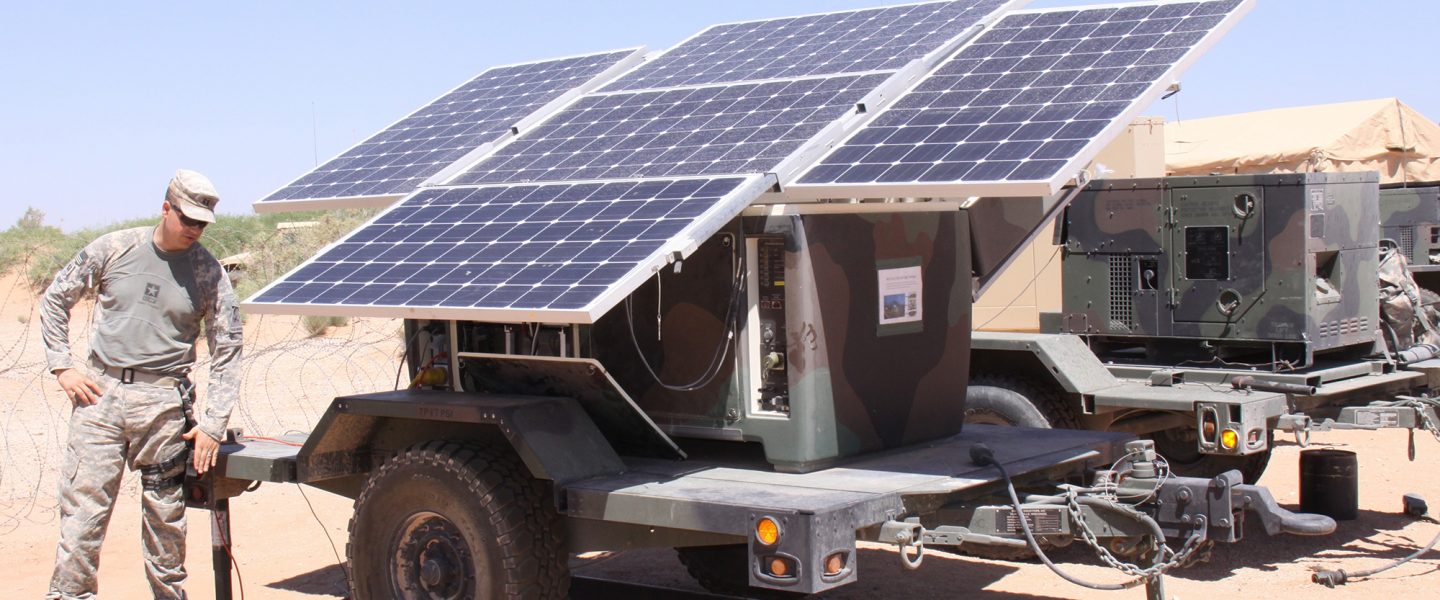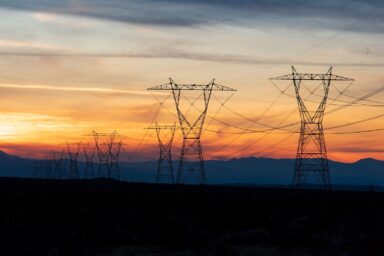With the world’s military spending now exceeding $2.2 trillion annually, environmental experts wonder why there is so much money for weapons but not for fighting humanity’s greatest threat: climate change.
|
Listen To This Story
|
With a total of $2.2 trillion spent on military expenditures in 2022, the world’s countries are arming themselves to the teeth. However, environmental experts criticize that not nearly as much money goes toward fighting climate change — a shared enemy that poses a danger to all of humanity.
“Globally we are spending $2 trillion fueling the war machine,” said Charlie Cray, senior research specialist at Greenpeace USA, “but when it comes to fighting climate change, which is the greatest threat to humanity, suddenly we can’t afford it.”
Cray singled out the US, which accounts for more than one-third of all military expenditures.
“America is continually fighting the wrong war, thinking that the biggest threat to our country is other nations, when in reality it is climate change,” he said.
For example, as political scientist Neta Crawford of Oxford University points out, the US is preparing for potential threats from human adversaries. These threats do exist, but can be prevented with measures such as arms control and diplomacy.
Global warming, on the other hand, is “the most certain and immediate of any of the threats that the US faces in the next several decades,” Crawford writes in a report on the correlation between war and climate change.
The US military has categorized climate change as a national security threat and acknowledged the potential risk it poses.
“We face all kinds of threats in our line of work, but few of them truly deserve to be called existential. The climate crisis does,” Secretary of Defense Lloyd J. Austin III said in the early days of the Biden administration.
However, only a tiny portion of the massive US defense budget is earmarked to fight this threat. The Army Climate Strategy Implementation Plan earmarked total expenditures of $6.8 billion over the next five years for adapting to climate change as well as mitigating its effects.

Cray gives the Pentagon’s efforts to fight climate change a mixed review.
“It’s good in the sense that it helps advance new technologies where there is no investment otherwise,” he said. For example, the military invests in the development of new technologies, such as backpack solar power for soldiers or the conversion to using electric vehicles.
“But a lot of this is destructive or could be destructive,” he said. “It sort of reinforces the notion that we can solve this problem technologically when we can’t.”
For example, Cray believes the Army’s goal of reaching net zero emissions is improbable, especially considering their use of jet fuel.
“They use gallons of fuel per mile to fly F-35s and some of the other advanced aircrafts in the Air Force,” he said.
In addition, any dollar spent on military operations is generally bad for the climate because that expenditure increases greenhouse gas emissions. This was found in the Climate Collateral report published by the Transnational Institute, which investigated how military spending accelerates climate breakdown.
Crawford’s estimate shows that the US military’s total greenhouse gas emissions in 2017 were greater than those of entire industrialized countries such as Sweden, Denmark, and Portugal.
“Moreover, the steady increase in weapons and arms worldwide is also adding fuel to the climate fire, stoking violence and conflict, and compounding the suffering for those communities most vulnerable to climate breakdown,” says the Climate Collateral report.
Cray pointed to the first Gulf War, where oil was used as a weapon, as an example of the environmental damage that wars cause.
“So, that’s war. And then you have the build-up to war, which is another whole piece of the puzzle,” he said. He mentioned the emissions of extended supply chains, the mobilization of troops, and their use of fuel as examples of the military’s impact on climate change.
While the US military is not spending a lot of money on fighting climate change, it is paying a heavy price for its effects.
In 2018, the Department of Defense reported that about half of military installations had already experienced climate change-related effects. For example, in 2018 Hurricane Michael caused $4.7 billion in damage at Tyndall Air Force Base.
As just some examples of how the military is affected by climate change, Cray noted that rising sea levels impact naval bases, increasing heat leaves soldiers with fewer days for training to prevent heat exhaustion, and other changing weather conditions complicate combat.
Furthermore, the Army takes “secondary impacts of climate hazards” into account, such as “an increased risk of armed conflict in places where established social orders and populations are disrupted,” as stated in the Army Climate Strategy.
The US military also comes in as first responders after climate disasters, for example after Hurricane Sandy in New York.
“That’s an expense on climate change, too,” Cray pointed out.
Nevertheless, climate change is not a problem that can be tackled merely by the US military.
“It’s not a national security issue alone,” said Cray. “To solve it, it has to be global. We have to have a stronger global security framework.”
He criticized that this currently “doesn’t really exist within the UNFCCC” [United Nations Framework Convention on Climate Change].
In 2019 and 2020, global investments in climate protection reached $653 billion. If the target of limiting an average global temperature increase of 1.5 C is to be achieved, however, according to the Climate Policy Initiative, an annual investment of $4.3 trillion by 2030 is necessary.
 The necessary sum used to be lower. In 2006, economist Nicholas Stern estimated that investing 1 percent of the global GDP — which was $51.78 trillion at the time — could have prevented us from reaching the 1.5 C threshold. Because that opportunity was wasted, the required costs have risen immensely.
The necessary sum used to be lower. In 2006, economist Nicholas Stern estimated that investing 1 percent of the global GDP — which was $51.78 trillion at the time — could have prevented us from reaching the 1.5 C threshold. Because that opportunity was wasted, the required costs have risen immensely.
Current investment efforts, such as a $100 billion annual donation by the world’s richest nations to the world’s most vulnerable countries to help with climate adaptation, are not even being fulfilled.
Instead, said rich nations are spending 30 times more on their military than on climate expenditures. In fact, with what they spend on their militaries in one year, the 10 biggest defense spenders could cover the $100 billion promise over 15 years.
“The technology to address this crisis isn’t lacking and, clearly, neither is the availability of funds. What is lacking is the political willpower to move from incremental to transformational change, shift financial flows from problems to solutions, and deliver on equity and climate justice,” said Charlie Cray.
But it is necessary to make that investment now.
“Making required investments to curb the climate emergency also makes sound economic sense,” Cray pointed out. “UN research showed that $125 trillion of climate investment is needed by 2050 to meet net zero. Inaction would be far costlier at $178 trillion.”
Therefore, by acting more quickly, these governments could save themselves the $43 trillion that would have been spent to avert an unimaginable catastrophe.
“If the purpose of government is to serve the people,” Cray added, “then leaders should be doing everything they can to secure safe, healthy, and livable communities by keeping us under 1.5 C warming.”




